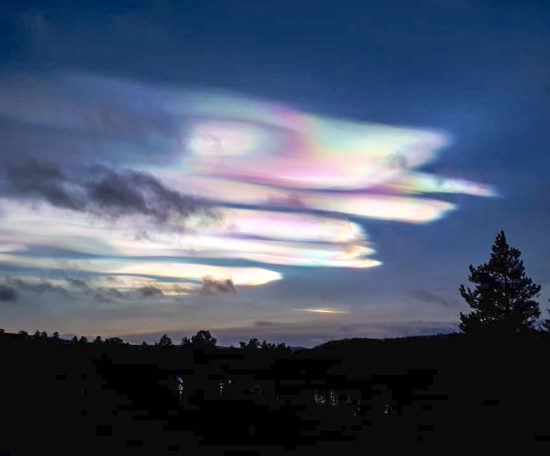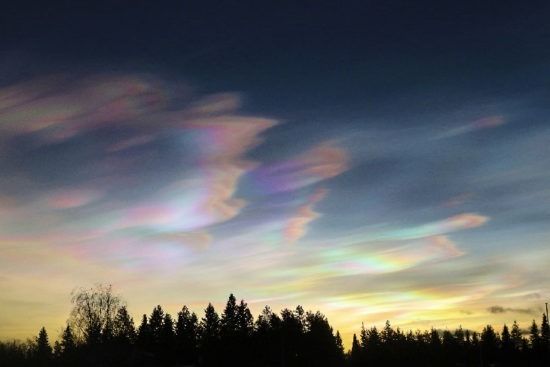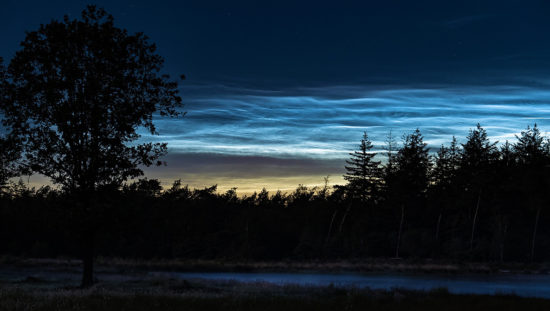
Increasing carbon dioxide in the atmosphere will continue to cause upper atmospheric cooling in the 2020s, which will lead to some of the most beautiful cloud displays ever witnessed by human eyes.
Along with the warming in the lower atmosphere that more CO2 is theoretically expected to produce, the upper atmosphere is supposed to cool even more strongly. For example, in our satellite observations since 1979, we have observed about 3-4 times as much cooling in the middle stratosphere as warming in the troposphere over the last four decades. This cooling is expected to exist even higher up, into the upper mesosphere and beyond, which is at the edge of outer space and where meteors burn up. The current record solar minimum conditions are probably also contributing to this cooling.
Polar Stratospheric Clouds and Noctilucent Clouds are Increasing
As 2019 came to a close, reports of some of the most vivid opalescent displays of wintertime polar stratospheric clouds (PSCs) in memory have been coming in from Northern Europe. These clouds require very cold temperatures in the stratosphere (-80 deg. C or colder). They show up shortly after sunset or before sunrise when the sun is still shining at that high altitude (15-25 km), while the usual weather-related clouds in the troposphere are no longer illuminated by the sun.

In the summertime in the polar regions, electric-blue noctilucent clouds (NLCs) are sometimes seen in the upper mesosphere (80-85 km) where temperatures plunge to the coldest anywhere on Earth, -100 deg. C. Like PSCs, they are seen after sunset or before sunrise, but due to their great altitude occur when the sun is well below the horizon and some brighter stars are beginning to shine. These clouds exist at literally the edge of space, above 99.999% of the mass of the atmosphere, and are believed to be seeded by meteoric dust.

These clouds have a rippled appearance, and time lapse photography has revealed an amazing variety of undulations, like waves from multiple pebbles thrown in a pond interacting. The following 4K time lapse video shows cloud behavior unlike any you have seen before, and is well worth the 2 minutes it takes to watch (go full-screen):
2017 NOCTILUCENT CLOUD CHASING SEASON TEASER – 4K (UHD) from Night Lights Films on Vimeo.
Last year (2019) NLCs were observed well outside the polar regions for the first time in recorded history, as far south as southern California and Nevada. This is due to some combination of colder temperatures and higher water vapor amounts (methane is converted to water vapor at these altitudes, and increasing atmospheric methane could be causing higher humidity up there).

 Home/Blog
Home/Blog



